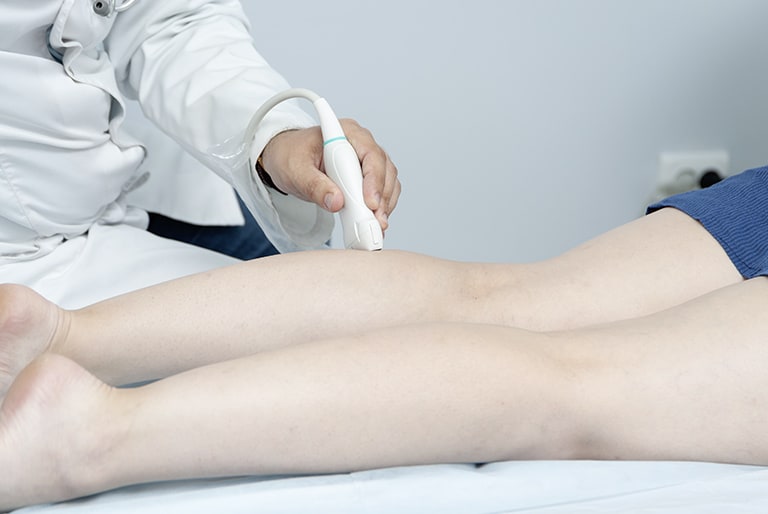Which doctor to go to with varicose veins?
Varicose veins are a widespread problem which many people prefer to hide under trousers in summer, instead of entrusting themselves to a doctor. Nowadays, doctors have many options to remove the unsightly tortuous lines of your leg veins. But which doctor is responsible for varicose veins and venous diseases?

Which doctor is responsible for varicose veins?
Some phlebologists have totally specialised in the field of vein health. Often other doctors such as internists, dermatologists or surgeons additionally train as phlebologists and can provide an accurate diagnosis of the condition and functionality of your veins. An angiologist also knows about vessel diseases of arteries, veins and lymphatic vessels and can be visited for circulation problems and oedemas.Naturally, the first port of call can be your family doctor, who can make an initial diagnosis and, if needed, refer you to a specialist who can better evaluate the diverse venous diseases. The best thing to do is ask your family doctor if they can help you find a doctor for venous disorders.
What does a phlebologist do?
Phlebologists have specialised in the human venous system and its pathological changes and, by using various modern procedures, can provide a very precise diagnosis on the characteristics of your vessels and their functionality.
Around 90 per cent of the German population suffer with pathological changes to their veins1, but only a few take warning signs such as swollen legs, tired legs and leg pain seriously and seek medical attention. That would facilitate an early diagnosis which would enable varicose veins and other complications of venous insufficiency to be treated with success.
A phlebologist also examines and treats:
- Spider veins
- Varicose veins
- Venous insufficiency
- Vein thrombosis
- Lympoedema
- Vein inflammation
- Open leg
Above all, the vein specialist can also recognise diseases of the deeper veins, which are not visible from outside but which can lead to serious health problems. He has the following diagnostic methods at his disposal:
- Ultrasound (sonography)
- Venous function test
- Phlebography
The phlebologist is also responsible for the removal of spider veins and varicose veins. While the removal of spider veins is a purely cosmetic operation which is often carried out by specially-trained dermatologists, there are different methods for varicose veins
A comprehensive examination by the phlebologist is required, as it is the individual characteristics and location of the veins which determine which procedure is right for the patient. Your doctor can explain benefits and drawbacks and takes over the resultant aftercare following the operation.But varicose veins do not always have to be removed. If the varicosis is deemed harmless, the phlebologist will prescribe conservative measures to treat the venous insufficiency, such as movement, vein gymnastics, physiotherapy, massages, lymphatic drainage or compression therapy.
When should you go to the doctor with varicose veins?
Varicose veins are always a visible indication of an existing venous insufficiency which should definitely be examined by a doctor. Quite often the venous disorder turns out to be harmless, albeit annoying and unsightly. But the root cause could also be a serious venous disease which should be treated in order to lower the risk of possible thrombosis, and to prevent further damage to your veins.
But a doctor should examine your veins more closely before varicose veins form in the first place. As before the visible varicose veins develop, quite different forerunners of venous insufficiency usually emerge, such as
- Spider veins
- Swelling of the legs, which increases during the day
- Heavy legs
- Itchy legs
- Tingling in your feet and legs
- Nightly calf cramps
The sooner a venous disorder is detected, the better the progression of the disease can be countered through a combination of exercise, compression therapy and vessel-stabilising medicines, such as Veno SL® 300.
A visit to your doctor is urgently required if one leg suddenly swells up, feels warm to the touch and there is additional pain. They could be indications of thrombosis, which must be treated immediately!
1 Source: Deutsche Venenliga